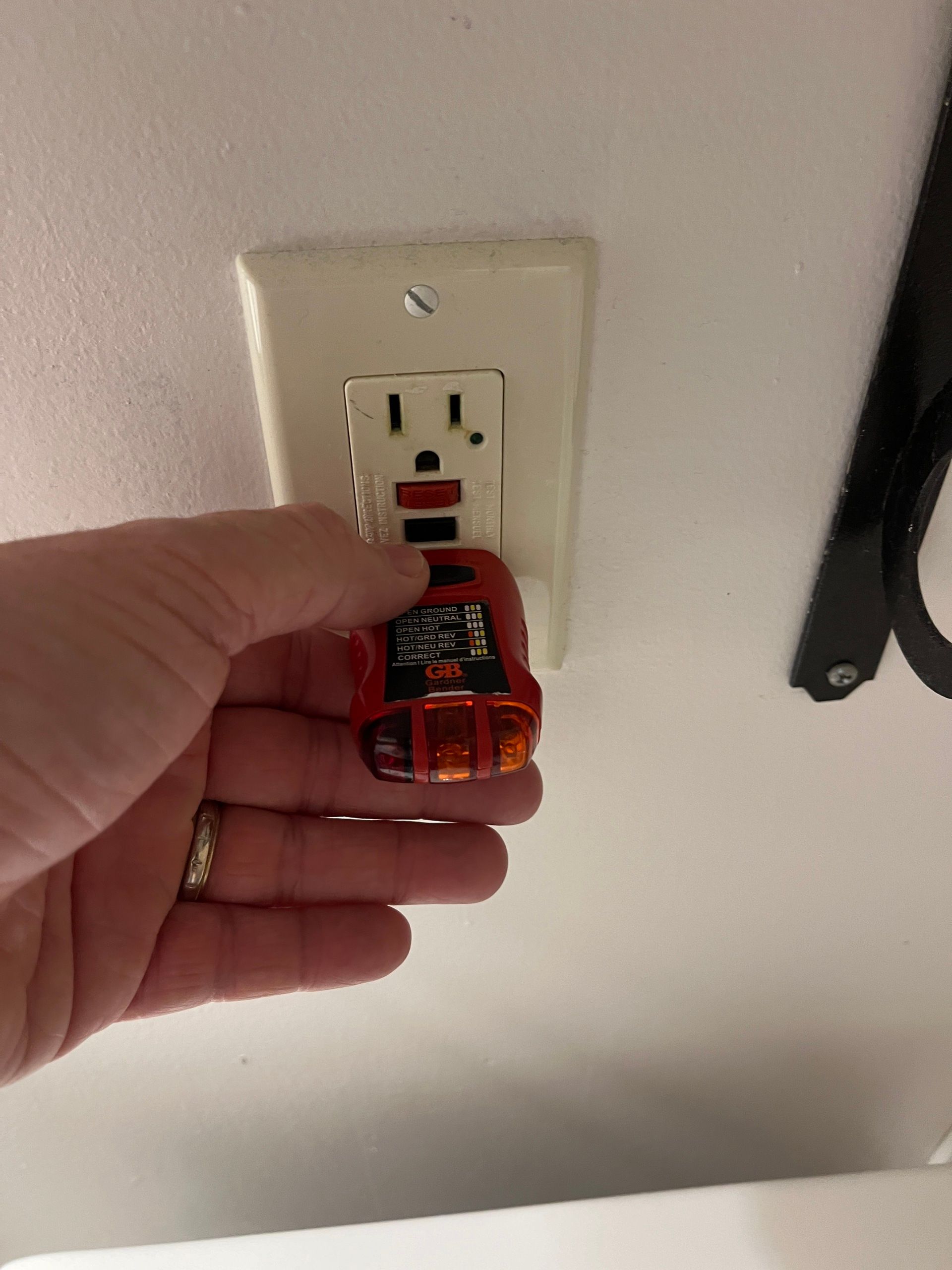🕵️♂️The Inspection Insider
Know What Home Inspectors Look For—And Fix It First
Tips from a Certified Master Inspector to help you avoid surprises.
One Dead Outlet. One Nervous Buyer. One Seller Out $1500
A few months ago, I inspected a clean, mid-90s home. Fresh paint. Tidy baseboards. Even one of those “Home Sweet Home” signs at the front door.
The inspection was going smoothly and the buyer was very happy and excited. Until we got to the main bathroom.
When I plugged my tester into the bathroom GFCI outlet, Nothing.
I tried the reset button. Still dead. I went and checked the breaker. it was on. Then I checked for a redundant GFCI. No luck
The buyer, standing behind me, asked, “Is that bad?”
“It’s an easy fix,” I told her. But her Realtor wasn’t impressed.
That one dead outlet and the seller ended up paying for new GFCIs throughout the house plus a $1,000 price reduction.
All because of a $17 outlet that could’ve been replaced in about 10 minutes.

Dead GFCI
Most sellers don’t realize GFCI outlets wear out over time—even if they look brand new.
They fail silently, offering no protection at all.
If I test them and they don’t trip? It gets flagged. Every time.
Buyers lose confidence. Sellers lose money.
What I Look For (and Why It Gets Flagged)
I test every GFCI in the home using a professional GFCI tester.
I look for:
No response when pressing TEST (power stays on)
Dead outlets (no power at all)
Not resetting
Ungrounded or Backwards wiring
Multiple outlets controlled by one faulty GFCI
Incorrectly placed GFCIs (like inside a cabinet - not accessible)
These little outlets have one job: to protect people from getting electrocuted.
They sense when electricity is flowing somewhere it shouldn’t—like through water or a person—and they shut off in milliseconds.
But here’s the kicker: they wear out.
And when they do, they might look totally normal… until I test them.
If it fails the test, it goes in the report—no exceptions.
The Fix
Here’s how to test—and replace—a faulty GFCI:
Buy a GFCI tester ($10–$20 at hardware stores or Amazon)
Test all GFCI outlets:
Kitchen
Bathroom
Garage
Outdoor
Press the TEST button
Press RESET — if it doesn’t work, it needs replacing
👉 Replace it yourself (watch the short YouTube video below)
👉 Or call an electricianTo replace it yourself: (only if you’re comfortable working with electricity
Turn off power (breaker or fuse)
Test to be sure the power is off
Remove the old GFCI (Disconnect wires)
Follow the included wiring diagram
Install the new GFCI
Restore power and test again
⏱️ Time: 10–15 minutes
🛠️ Tools: Tester, screwdriver, new GFCI outlet
Or just call a licensed electrician—it’s still cheaper than negotiating after a flagged report.
Just a Heads up: If it fails during the inspection the buyer is going to ask for a receipt from an Electrician. There is no fixing it yourself at that point.
Why It Matters
A dead GFCI isn’t just a small oversight—it’s a safety red flag.
And when buyers see one thing wrong, they start imagining what else was ignored.
For less than the cost of a pizza, you can fix one of the most common inspection issues before it ever hits the report.
GFCI Replacement YouTube
🛠️ Pro Tip
GFCIs have a lifespan of about 10 years or so. If your house is older than that—replace them all before your inspection. It’s a cheap win that makes you look like a proactive, responsible seller.
🔎 Coming Next Week…
The $10 Caulking Job That Could Save You $1,200
Water damage is one of the most common—and expensive—inspection issues.
We’ll show you where to look and exactly how to re-caulk tubs and sinks like a pro.
Ron Henderson, CMI
Certified Master Inspector
Like this tip? Share it with your friends and family!
Questions? Comments? Drop me a line at: [email protected]
Disclaimer: Some details in these stories have been modified to protect the privacy of individuals involved. While the events are based on real experiences, names, locations, and certain specifics may have been altered.
This email may contain affiliate links, which means I may earn a commission—at no extra cost to you—if you choose to make a purchase through those links.